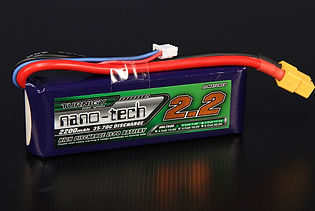
Kingdom of Airsoft Ltd
Sam is back at college now (studying Electrical Engineering) so we're going to be closed on Wednesdays and Thursdays.
All About LiPos
And why they won't explode every time you pull the trigger
LiPo batteries (short for Lithium Polymer) are becoming ever more popular in the world of airsoft but many misnomers, bits of misinformation and internet warriors have confused and mystified the realm of this most useful chemical configuration.
LiPo batteries are a type of rechargeable battery that are taking the airsoft world by storm.
They have many advantages over the current range of NiMH (Nickle Metal Hydride) batteries and the older NiCad (Nickle Cadmium) batteries but also a number of new safety precautions to take heed of.
I commonly advise airsoft players looking for more performance out of their RIF to consider moving to LiPos so instead of going through a lengthy explanation with each individual, I have prepared this guide that I hope will help you understand what they are, why you might want to use them and how to do so safely.
LiPo batteries have several advantageous characteristics that make them the perfect choice for use in our airsoft RIFs.
-
LiPo batteries are light weight and can be manufactured in pretty much any shape and size
-
LiPo batteries can hold more charge for their size
-
LiPo batteries have much higher discharge rates to power even hungriest airsoft motors
-
LiPo batteries are now cheaper than NiMhs in terms of the cost of relative performance
So basically, LiPo batteries are smaller, higher capacity batteries that pack more punch and are available in a vast array of different shapes and sizes.
These qualities are providing our airsoft weaponry with new levels of performance enabling new builds and configurations to open up that have never been possible before.
There are a few down sides to LiPo batteries however:
-
Due to the volatile electrolytes used in LiPo batteries, they can explode or catch fire if not properly cared for
-
LiPo batteries require a different method of charging and discharging compared to Nickle based batteries which requires new equipment and new knowledgeThere are a few different types of commonly used Lithium based batteries in airsoft so I'll give a brief explanation of each type. The main types used are Lithium-Ion (Li-Ion), Lithium-Ion-Polymer (shortened to LiPo) and Lithium Iron Phosphate (LiFePO4).You may have noticed these different types of batteries or heard them mentioned in your travels.Li-Ion batteries are most common in phones, laptops and radios; LiPos are the most common Lithium battery used in airsoft and LiFePO4 batteries are making inroads in airsoft but are being held back by a few detrimental characteristics.All of the Lithium batteries used in airsoft have essentially the same chemical makeup in that they all rely on an Ion exchange between the Lithium Carbon Cathode and the Anode.The Anode and Cathode can be understood as the parts of the battery that cause the current to flow. Sort of.The main differences are in the way each type of battery is packaged and the specific Electrolyte used (which is the stuff that allows the current to keep flowing once it has started; sort of)
Li-Ion
Li-Ion batteries use a flammable solvent based organic liquid as the electrolyte. Li-Ion batteries tend to be encased in a hard metal can like more conventional batteries, to keep the electrodes wound up tight against the separator sheet. This adds weight and does not allow for as many different shape and size configurations.
Partly due to this need for metal containment, they have a much lower energy to weight ratio and tend to come with much lower discharge ratings as well as capacities.
I generally do not recommend their use at all.
Li-Ion-Po (LiPo)
Pretty much every airsoft LiPo battery out there is actually a hybrid Lithium-Ion Polymer battery. Original Lithium Polymer batteries used a dry electrolyte which was not as effective as the modern equivalent.
Modern LiPos now use a gelled electrolyte which saturates the Polymer separator sheet between the Anode and Cathode. This is what gives them the incredibly high Ion flow rate, or Discharge Rate (C) that we enjoy today.
One interesting characteristic of LiPo batteries is that they do get slightly more efficient once warmed up. If you have ever noticed that your RIF seems to gain a little more power a minute or so after working the battery; what you are experiencing is the increase in ion exchange efficiency once the battery chemistry warms up.
LiFePO4
Guide still in progress, check back soon








